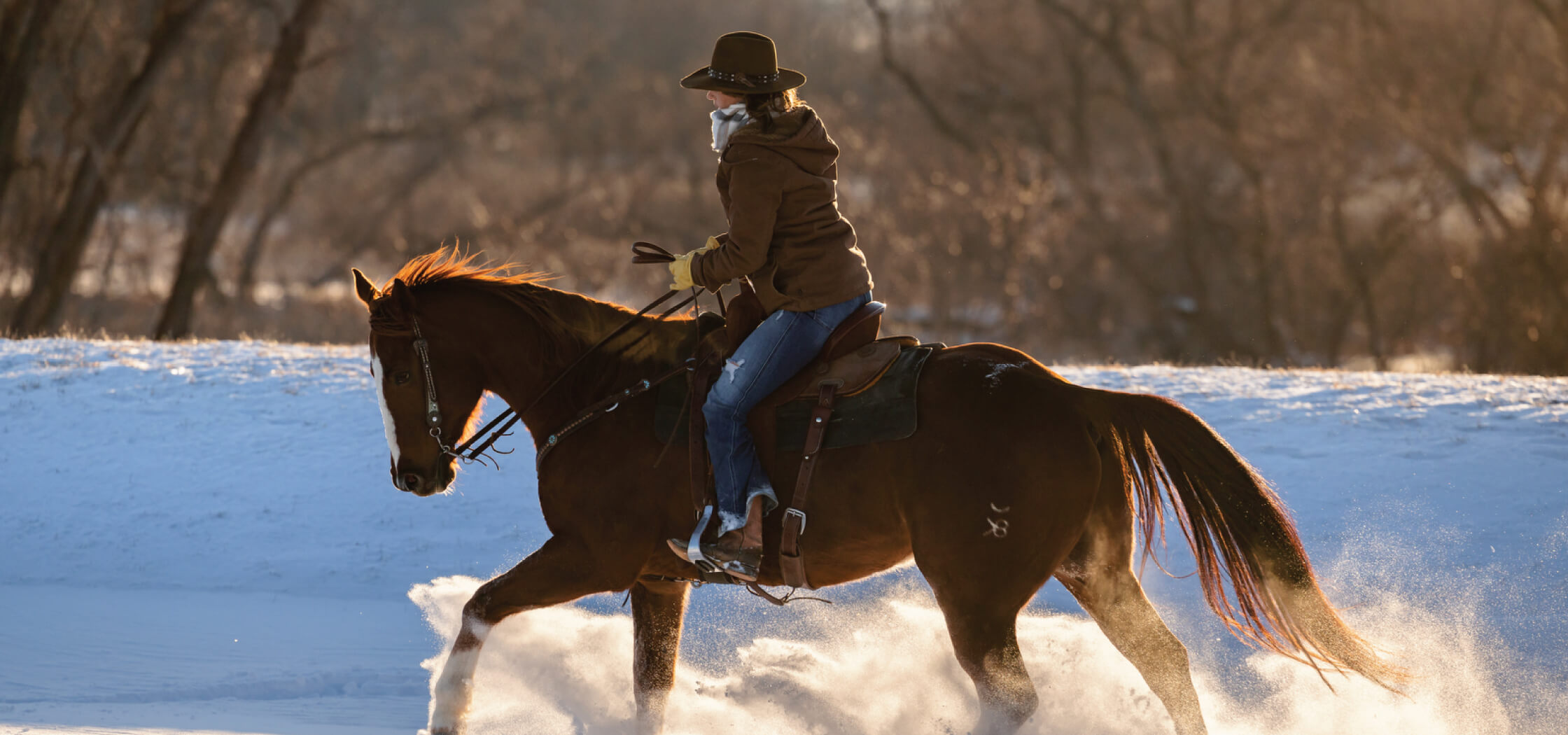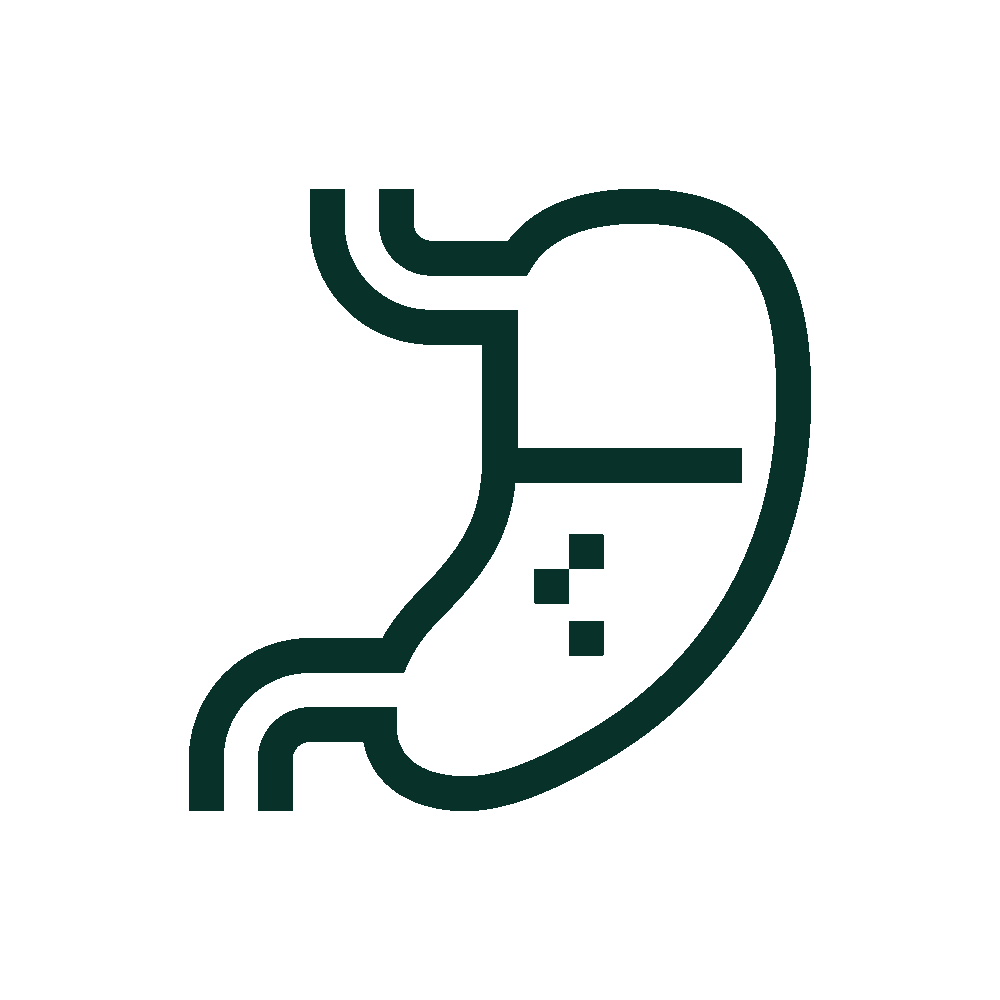Winter Osteoarthritis Care
by Boehringer Ingelheim / May 17, 2024

How to Manage Osteoarthritis in Cold Weather
A horse with osteoarthritis (OA) suffers from deterioration of the cartilage, bone and soft tissue in and around their joints. This can cause pain, loss of motion and decreased function.
For horse owners whose horses suffer from OA, winter elements like freezing temperatures, deep snow and slick ice can make the disease more difficult to manage. Though OA is not curable, there are a few ways to manage the disease. Julie Settlage, DVM, DACVS, Professional Services Veterinarian, Boehringer Ingelheim, shares several steps below:
Step One: Recognize the Signs of OA
It’s impossible to manage something you don’t know is happening. Recognizing the signs of OA is the first step in making sure your horse stays comfortable during winter months. The clinical signs of OA include:
- Decreased activity or mobility
- Joint stiffness or decreased movement in the joint
- Heat and/or swelling of the joint
- Pain
- Lameness
Signs may become more obvious in the winter, due to cold temperatures and changes in management that may put more stress on the affected joints.1
Once you’ve identified the signs, and your horse has been diagnosed with OA by a veterinarian, you can begin managing the signs.
Step Two: Keep Your Horse Moving
The easiest way to manage the signs of OA is to simply keep your horse moving. Especially in colder weather, it’s important to make sure your horse stays fit and gets their joints moving. As long as it is safe to do so, continue activities such as:
- Turnout
- Hand walking
- Groundwork
- Riding
“It’s important to include a proper warm-up and cool-down before and after work, as well as making sure that the work isn’t excessive,” says Dr. Settlage.
Maintaining a reasonable training program can help keep your horse fit and supple.
Step Three: Decrease Inflammation
Talk to your veterinarian about using nonsteroidal anti-inflammatory drugs (NSAIDs) to help reduce overall pain and inflammation. There are many different options available, and your veterinarian will be able to determine which product will work best for your horse.
EQUIOXX® (firocoxib) is the first coxib-class NSAID to be approved by the FDA for use in horses. Administered once daily, EQUIOXX tablets provide your horse with up to 24 hours of pain relief. EQUIOXX (firocoxib) is a COX selective NSAID, meaning it preferentially inhibits inflammation-producing pathways, while sparing other pathways that are important to stomach protection, kidney health and blood clotting.*
*Clinical relevance has not been determined.
EQUIOXX IMPORTANT SAFETY INFORMATION: As a class, non-steroidal anti-inflammatory drugs may be associated with gastrointestinal, hepatic and renal toxicity. Use with other NSAIDs, corticosteroids or nephrotoxic medication should be avoided. EQUIOXX has not been tested in horses less than 1 year of age or in breeding horses, or pregnant or lactating mares.
![]() Another option is SURPASS® (1% diclofenac sodium), the only topical NSAID for horses that is approved by the FDA and can be applied directly onto the source of inflammation to control pain and inflammation in joints affected by OA.*2,3
Another option is SURPASS® (1% diclofenac sodium), the only topical NSAID for horses that is approved by the FDA and can be applied directly onto the source of inflammation to control pain and inflammation in joints affected by OA.*2,3
SURPASS IMPORTANT SAFETY INFORMATION: SURPASS topical cream is only approved for use in horses and has not been evaluated in breeding, pregnant, or lactating horses, or in horses under 1 year of age. Do not exceed the recommended dose. Wear gloves when administering SURPASS. If direct contact with skin occurs, wash immediately with soap and water.
Step Four: Maintain General Winter Best Practices
Though horses with OA require special maintenance to keep them comfortable, their normal winter needs should not be overlooked. Winter care for any horse should include:
- Turning them out as often and as safely as possible, being conscious of the footing
- Access to quality forage to help them maintain gastrointestinal health and body weight, and to provide warmth
- Monitoring water intake, especially if the horse is receiving an NSAID
- Protection from winter elements, including access to a shelter or appropriate blanketing, if needed
- Talk to your farrier about what, if any, modifications should be made to your horse's shoeing during the winter
Unfortunately, OA is not curable, but by following these tips and working with your veterinarian, the winter months can be more comfortable for both you and your horse.
REFERENCES
1Paturel A. Why is arthritis worse in the winter? Cedars-Sinai blog. 2022. Available at: https://www.cedars-sinai.org/blog/arthritis-worse-in-winter-winter.html Accessed August 29, 2022.
2SURPASS Freedom of Information Summary. Greensboro, NC: IDEXX Pharmaceuticals, Inc.; 2004 .
3Caldwell FJ, Mueller POE, Lynn RC, Budsberg SC. Effect of topical application of diclofenac liposomal suspension on experimentally induced subcutaneous inflammation in horses. Am J Vet Res 2004;65(3):271–276.
EQUIOXX® and SURPASS® are registered trademarks of Boehringer Ingelheim Animal Health USA Inc. ©2025 Boehringer Ingelheim Animal Health USA Inc., Duluth, GA. All rights reserved. US-EQU-0133-2024






